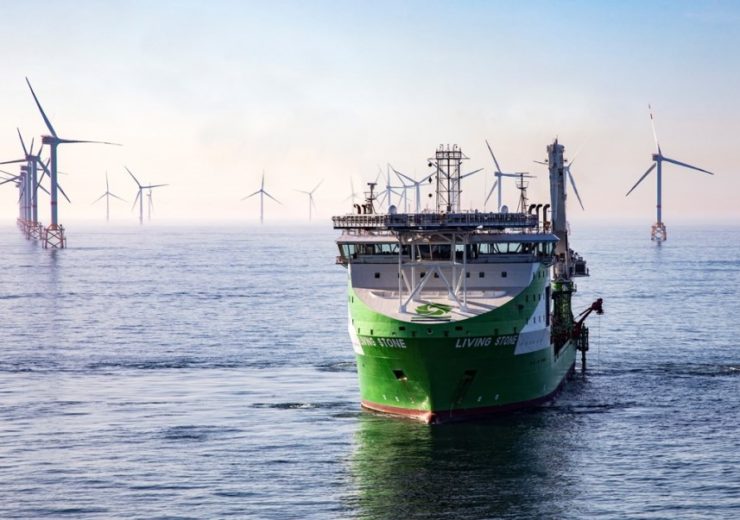Deme claimes to have completed the subsea export cables using its Living Stone vessel well ahead of schedule

Image: Deme’s Living Stone vessel during the cable laying process. Photo: Courtesy of DEME.
Offshore services provider Deme has completed installing 85km of subsea export cable for Elia’s Modular Offshore Grid (MOG), using its cable installation vessel ‘Living Stone’.
The installed cable network will connect Elia’s Offshore Switch Yard to the shore station Stevin at Zeebrugge, along with Rentel wind farm Offshore Substation.
Deme stated that it’s Living Stone vessel collected the cable at the manufacturer Hellenic Cable in Greece, transported it to the site in Belgium and completed the cable installation, offshore jointing, and four pull-ins.
The offshore services provider stated that the new cable installation system on board its vessel helped in completing the work well ahead of schedule.
The dual-lane cable installation system, consisting of two cable highways, is capable of installing one cable while the next cable can be simultaneously prepared on deck, including the installation of the cable protection system (CPS).
Deme Offshore project director Marco Kanaar said: “This is again a very successful job executed by the ‘Living Stone’. It was great to see all plans worked out without any set back.
“Usually with a new, complex vessel such as the ‘Living Stone’ you might expect some teething problems, however it was great to see that our crew had already ironed out any potential issues beforehand.
“Definitely the great team spirit between our marine crew and project team and certainly the constructive approach from our client Elia have been instrumental to the success.”
MOG is of strategic importance for Belgium
The Modular Offshore Grid (MOG) is a grid project of Elia in the North Sea and is claimed to be the first of its kind in Belgium. The MOG will group and connect energy generated offshore from four new wind farms including Rentel, Seastar, Mermaid and Northwester 2.
The connected energy from the MOG will be transmitted to the Belgian onshore grid. The MOG is of strategic importance for Belgium to further develop renewable energy in the North Sea.
Elia project director Tom Pietercil said: “The MOG plays an essential role in the transition towards more renewable energy. We are especially proud that Elia can act as a pioneer in this regard.
“The project has been completed in record time: the first agreements were made with the authorities in March 2016, and the MOG will be operational this September. This is the result of good cooperation between all partners in the project.”
Deme, which secured the submarine power cable project in August 2017, also deployed new trailing suction hopper dredger ‘Bonny River’ for the project to backfill 45km of trenches.
